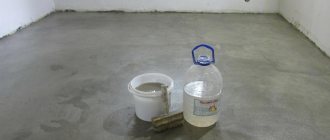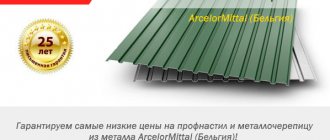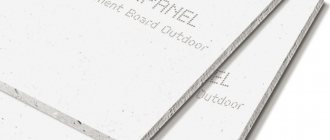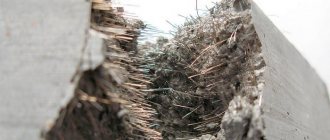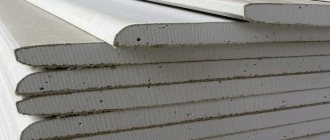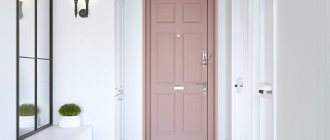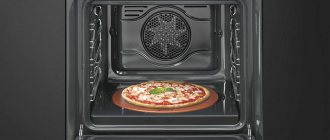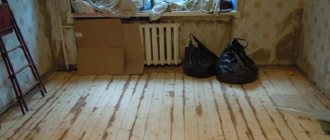What is liquid glass
Liquid glass is a silicate-based adhesive. Recently, you can often find that treating a body with polish is called liquid glass. The remedies actually vary.
When the material dries, a layer is created that does not allow liquids and air to pass through. In liquid form, it penetrates well into the surface to close all pores.
When the material dries, a layer is created that does not allow liquids and air to pass through.
How to make dense foam?
You need to prepare a suitable container in which the polystyrene balls are placed, and then start heating them with steam. During the heating process, the balls will begin to swell and stick together. The result is a dense mass of polystyrene balls, which have acquired exactly the shape that the container had.
Interesting materials:
How to determine gender in Compound words? How to determine if a thermometer is mercury or not? How to identify an oil-based pen? How to determine type 1 or type 2 diabetes? How to determine the balance in active accounts? How to identify salmonellosis in chickens? How to determine whether a herring is female or male? How can you tell if a ring is silver or not? How to determine north by clock? How to determine the alkalinity of the earth?
Features, characteristics and composition of liquid glass
Sodium or potassium silicate is introduced into the base; microcrystals, which are responsible for closing the structure of the material, and quartz sand are also added. Coloring is not used, because coloring leads to deterioration of properties, and the seam will not be beautiful. A good waterproofing result is obtained due to the technical characteristics of the product:
- Moisture-repellent property;
- Antiseptic protection;
- Antistatic effect;
- High level of curing;
- Protective property against the harmful effects of alkaline acid substances;
- Fire resistance.
Coloring is not used, because coloring leads to deterioration of properties, and the seam will not be beautiful.
Why does this happen?
The main source of all troubles in such cases is the broken coating gluing technology. However, this reason contains several factors at once, each of which could be the culprit of what happened:
- No primer was applied before installing the coating. The glue does not adhere well to the base and, as a result, everything falls off.
- The base was not thoroughly cleaned. Dust that could get under the adhesive layer worsened its adhesion to the floor.
- The base had too significant defects that prevented the glue from completely gluing the parts.
- The layer of adhesive mixture was too thick. Thickness matters here - many people try to level out unevenness with a thick adhesive layer, and this worsens the properties of the masonry.
- The layer was too thin - the adhesive mixture simply did not have enough “strength” to hold the glued fragment in place.
- The solution is not applied to the entire area of the part to be glued. Under it, empty areas could form, which, when a load occurred, allowed the tiles to wobble and, as a result, they moved away from the base.
Before starting restoration work, it is worth analyzing what happened and making a decision based on the results: remove all the tiles or limit yourself to local repairs. Few will like the first option, but sometimes there is simply no other choice. If the reason is serious, then fragments of the coating will continue to fall off until you essentially replace the entire coating. It's better to do everything at once and not think about it anymore.
The main pros and cons of liquid glass
The choice of whether to treat a surface with liquid glass is easier when the positive and negative aspects of the process are known. The following advantages of the material can be noted:
- Creating a film that does not allow moisture to pass through;
- High level of adhesion, penetration into any surface cracks;
- Economical consumption, can be added to cement mortar;
- Reasonable cost;
- Long service life;
- Resistant to a variety of substances.
The presence of a large number of advantages does not exclude the disadvantages:
- Incompatible with all materials, can only be applied to concrete and wood;
- The layer is brittle, additional product should be applied on top;
- It is not possible to apply over another finishing material; paints and varnishes do not adhere to it;
- Carrying out the application requires special skills; it is almost impossible for a beginner to do the job with his own hands;
- The product cannot be tinted.
The product dries very quickly, so the work requires a fast pace from the master.
The surface is rarely covered with liquid glass separately; it is usually combined with another waterproofing material, but the product helps to obtain high-quality protection on concrete and wooden bases.
The surface is rarely covered with liquid glass separately; it is usually combined with another waterproofing material.
How can you paint polystyrene foam without damaging it?
Content
When making decorative elements, sometimes a logical question arises about how to paint the foam (since it is most often white). Not all decorative compounds (varnishes, paints) are well compatible with this material; some destroy its structure.
There are many different ways to paint foam board.
Advantages of painted material
During operation, products made from foam plastic gradually lose their original appearance, therefore, using coloring, it can be improved.
Before you begin, you need to make sure that the chosen paint for foam plastic will not only damage the material, but will also provide some advantages:
- protects against negative environmental influences (dirt, moisture, stains);
- will add freshness to a product that has yellowed over time;
- will facilitate further care;
- makes it easy to clean;
- fits well into the existing design;
- will give a complete look to the room.
Paint selection criteria
First of all, you need to check that the foam has the following properties:
- high moisture resistance;
- sufficient density;
- withstands exposure to chemicals and the negative influence of the external environment.
When choosing a composition, you should take into account that this material is unstable to toluene, acetone, ethyl acetate, white spirit and other solvents that corrode it and cause deformation.
It is recommended to give preference to water-based (water-dispersion) coatings: acrylic or water-based.
Such coatings must meet the following requirements:
- have the ability of strong adhesion to the surface being painted;
- be resistant to moisture;
- have a dense structure;
- be highly resistant to aggressive detergents;
- have the ability to retain color under the influence of direct sunlight.
Advantages of acrylic coating:
- effective protection against ultraviolet rays;
- long service life;
- does not pose a health hazard;
- dries quickly;
- easy to apply;
- without smell;
- withstands high temperatures;
- wide color palette;
- easy to clean.
The only drawback of the acrylic composition is its high cost.
One of the types of paint that can be used to paint polystyrene foam.
Advantages of water-based paint:
- the layer lies flat;
- no smell;
- the coating is environmentally friendly;
- low cost;
- possibility of tinting in different shades;
- ease of application;
- good vapor permeability.
Along with numerous advantages, there are disadvantages:
- low resistance to dirt and wet cleaning;
- easily washed off with water;
- After applying several layers, peeling is possible.
Taking into account the existing shortcomings, water-based paint is in great demand.
Characteristics of coloring compositions
It is necessary to pay attention to the following characteristics that the composition must have:
- Application area. Universal or highly targeted, designed to perform only interior or exterior work. You can use façade water-dispersion paint for exterior work.
- Abrasion resistance. Provided that the product will be subject to mechanical stress in the future.
- Moisture resistance. It matters if the surface is exposed to moisture, so moisture-resistant acrylic paint is more suitable for the bathroom.
- Durability. A conditional indicator, it is influenced by the operating conditions of the surface after painting, partly from it one can draw a conclusion about the quality of the material.
- Covering power. An indicator that affects the number of layers required to paint a surface. Affects the consumption of the coloring composition. For oil paints this figure is higher than for water-based paints.
There are a number of requirements for materials intended for painting polystyrene-based products:
- the composition should not contain substances that dissolve foam;
- the adhesion coefficient to PSB and penoplex should be increased;
- high resistance to sunlight and atmospheric factors;
- creating an elastic coating.
Indoor work
For interior work, water-based paints are often used. Before painting, it is necessary to remove any existing contamination from the surface. Joints and technological seams are pre-puttyed.
Compositions that have a thick consistency are diluted with water and mixed thoroughly until smooth. To obtain the required shade, use color. The composition is applied in a thin layer, most often using a roller or brush, for embossed or large surfaces - a spray gun. With its help, the coating is applied quickly and evenly.
To ensure that the coating is uniform and has a rich color, after one layer has dried, apply the next one. For a high-quality result, you may need 2 or 3 of them.
To prevent the material from crumbling, it is recommended to pre-coat it with liquid plastic. If you want to highlight relief patterns with gilding or another color, use a thin artistic brush.
Exterior painting
Painting the outside of foam requires weather-resistant paints.
The walls of a building are affected by temperature fluctuations and precipitation, so paint for polystyrene foam must be flexible and not lose its qualities for a long time.
Before you start painting, you need to do some preparation. Acrylic compositions are more suitable for outdoor work, since they are highly resistant to environmental factors.
Before painting, it is necessary to putty the joints. Then experts recommend applying a primer and removing any unevenness after it dries. The paint is thoroughly stirred and brought to a uniform state and color.
The paint can be applied with a brush or roller in one direction. If necessary, use an aerosol.
Painting extruded polystyrene foam on the facade of a building consists of several preparatory stages:
- the surface is leveled (including the locations of the dowels), the joints are made invisible;
- cleaned of dirt and dust (for better adhesion of the primer);
- primed with an acrylic compound, the resulting drips are removed with a spatula.
After giving the paint the required shade, it is poured into the bath. To apply a decorative coating to the walls, use a roller, moving it in one direction (from bottom to top) to prevent the formation of streaks.
After waiting for one layer to dry, apply a second one. Often, when finishing facades, a layer of plaster is applied to the foam plastic. Before starting treatment, façade paints must be mixed well.
If the ambient temperature is below 15°C, it is recommended to use waterproof materials, since as the humidity level increases, the quality of the coating deteriorates. When applying the acrylic composition in a thick layer, bubbles may appear.
Sequence of actions during operation
The dyeing process consists of several stages:
- Preparatory – includes preparing the room (if possible, remove furniture from the room, cover floors and windows with film), put on protective clothing and special glasses. Prepare the necessary tools (brushes of different sizes and rollers, stepladder, bucket or paint tray).
- Preparing the material for coating - the joints on the new tile are sealed, the old one is cleaned of dirt, the seams are renewed, and primed.
- Coloring - when using the composition in an aerosol package, preliminary shaking of the can is required. After this, they begin painting the surface from a distance of 25 cm. After waiting until the first layer has completely dried, they begin to apply the next one.
If the coloring composition is in a jar, it is applied with a roller or brush. When applying several tones, the composition is thoroughly mixed before coating to obtain a uniform color.
You can also paint the foam with watercolors.
Additional painting tips
When using polystyrene foam in home decor for painting yourself, you will need:
- primer (preferably a special one designed for working with foam products);
- paints (in aerosol packaging, water-based acrylic, containing no solvents);
- varnish (performs a protective function, prevents aggressive environmental influences), preferably universal, water-based;
- masking tape;
- brushes (of different sizes and shapes), sponges, rollers;
- gloves;
- surface protection film;
- protective glasses.
For the purpose of artistic painting for crafts, you can use gouache and an artistic brush. Water-based paints are safe for health, have no odor, and are distinguished by bright, saturated colors. Fluorescent acrylic-based paints add special brightness to the products.
Sequence of work:
- The preliminary stage is priming. The surface of the product is cleaned and coated with a primer. When working with extruded or laminated polystyrene foam, the surface is first sanded to roughen it. And only after this the adhesive primer is applied.
- Remove any drips remaining from the primer with a spatula.
- When using aerosol paint, shake the can vigorously for 1-2 minutes and spray evenly. After the first layer has dried, apply the second.
When using acrylic paints, mix them well and add water to change the color saturation. For the purpose of fixing, a water-based varnish is applied to the surface.
If the paint composition contains solvents that pose a danger to the foam, you can protect the surface with plaster. It prevents the destructive effects of substances.
When working with paints from jars, it is convenient to have a flat brush 4 mm wide; it is better to handle small parts with a thin round tool. When applying acrylic paints, it is necessary to monitor the thickness of the layer. It should be thin so that the paints do not bubble or peel after drying.
Read further:
Areas of application of liquid glass
There are three main areas of use of liquid glass. The following areas can be identified for use:
- To treat the base to create a barrier from liquids and other environmental influences;
- Used together with a concrete mixture to improve waterproofing properties, the drying process will be shortened;
- For the production of various types of concrete.
It is used together with a concrete mixture to improve waterproofing properties and the drying process will be shortened.
General classification
Modern technology makes it possible to obtain the additive using various methods. The component can be produced by high-temperature processing of silicon raw materials together with an aqueous solution of sodium hydroxide. The equipment allows you to obtain an ingredient with specified properties by sintering soda with quartz particles. You can also use the method of mixing silicon dioxide with an alkali solution.
Depending on the manufacturing features, two types of ingredients are obtained:
- sodium mixture, characterized by increased adhesion, adhesive properties, resistance to atmospheric factors;
- potassium composition, characterized by accelerated drying, as well as good resistance to elevated temperatures.
The performance characteristics of both types of materials are identical, but the sodium composition has a lower price.
Additive to concrete – sodium liquid glass
Types of liquid glass
The constituent elements are potassium or sodium silicate. It is impossible to create a rating based on the type of this element that is selected for production and the funds are divided, because they differ in a number of properties:
- The first element has a protective property against alkalis, has a high degree of adhesion, and does not form a glass sheen on the surface;
- The second creates the same protection, but shines.
There is a granular type; water is added to the composition before use.
The constituent elements are potassium or sodium silicate.
Primer for foam plastic - types and application
Recently, cladding the external walls of buildings from foam has become increasingly popular. Such measures make it possible not only to carry out external repairs, but also, more importantly, to increase the heat-saving properties of the structure. In order for the work on insulating external walls to be carried out efficiently, you need to know which primer is suitable for polystyrene foam.
For exterior and interior use, the priming (and primer) of the foam is different, be careful
Since the work takes place entirely outdoors, it is necessary to use construction and finishing materials of appropriate quality and purpose. Installation and finishing solutions must have certain operating temperatures, moisture and heat resistance, strength and durability. That is, their task is to provide reliable protection of surfaces under the influence of atmospheric phenomena.
Let us note that experts in construction and repair issues definitely recommend using primer mixtures at intermediate stages. How and how to prime a foam surface, more on that later.
Types of primer mixtures
Primer mixtures differ in quality (composition), properties, and purpose. There are universal solutions suitable for both different types of work and for treating surfaces of various structures. Basically, all compositions are divided into strengthening and adhesive.
- Strengthening agents are used on porous structural surfaces. The main properties of such solutions are deep penetration into the base layers (up to 10 cm deep), the formation of a firmly protective film after drying.
- Adhesive solutions are applied to surfaces before plastering and other types of decorative cladding in order to improve the adhesion of materials. That is, here the primer serves as an intermediate layer that improves the physical and technical qualities of the finish.
The composition of the primer can be alkyd, acrylic, glyphthalic, phenolic, polystyrene, polyvinyl acetate, perchlorovinyl. Both the performance qualities of the solution and the possibilities of its use already depend on the composition.
For facade work, a material with the following properties is used:
- increased water resistance;
- moisture resistance;
- frost resistance;
- heat resistance;
- deep penetration, but also excellent grip;
- chemical inertness;
- biological inertia;
- ability to resist and neutralize efflorescence.
Primed polystyrene foam has a number of advantages, including the saving of solutions subsequently applied to it.
For the initial treatment of surfaces before applying the subsequent coating, a primer is simply necessary. Decorative wall cladding will subsequently hold up much better. In addition, deep-penetrating primer mixtures prolong the durability of base materials and improve their technical characteristics. Another useful property is a reduction in the consumption of subsequent solutions applied over the primer (glue, putty, paint, varnish).
Priming when insulating walls with foam plastic
Before attaching foam plastic to the walls, you need to do a number of preparatory work. It is imperative to clean off the old decorative coating, no matter what it is. Check the surface for damage.
Next, it is recommended to apply a deep-penetrating primer. Such preparatory work is especially important when reconstructing the facades of old buildings. This will not only compact the structure of the construction materials, but will also provide protection from further destruction. A material with a dense structure (for example, brick) is primed once, porous mineral materials - from two times.
After the primer has dried, seams and cracks are sealed. Next, the starting profile is installed and you can proceed to gluing the insulation boards (foam plastic). When all the foam boards are glued, they are additionally fixed in the corners with dowels (after the glue solution has almost completely dried). Then a layer of reinforcing mesh is attached to protect the coating from destruction. All this is covered with a layer of adhesive solution and left until tomorrow. The next day you need to repair the unevenness.
Before plastering, the surface is sanded and primed (you can read about how to properly prime walls before plastering here). A mixture is used that increases the adhesive properties of finishing materials. Next, a leveling layer of plaster is applied. Before grouting, it must dry (1-4 days). Grouting is carried out until a perfectly flat surface is formed.
But that's not all. Now you need to apply the decorative (finishing) finishing material. To ensure that the finish sticks well, we will use a primer again. Depending on what exactly the decorative coating will be, the composition of the primer mixture is selected.
This is how foam plastic is primed during façade insulation of walls. By the way, in some cases, foam insulation is installed not outside, but inside the room. There are some peculiarities here, for example, installation mixtures and solutions for intermediate work must be selected taking into account the permissibility of the application.
Rules for applying the primer mixture
- The mixture used must be diluted and mixed thoroughly. Breeding instructions are indicated on the packaging.
- Application can be done with a paint brush or a regular brush. Sometimes by roller or by spraying. After completing work, tools must be cleaned.
- The primer layer must dry well. Once dried, it will become resistant to mechanical damage.
- Do not neglect personal protective equipment.
By observing the manufacturability of finishing work, polystyrene foam wall insulation will perform its protective and insulating function for a long period. Again, cosmetic repairs and restoration of the facade will not be needed for a long time.
kraska.guru
How to choose liquid glass for waterproofing
There are several types of liquid glass on sale. They are selected for different needs. The presence of sodium silicate in the composition is better suited for creating a barrier against water. Potassium silicate is better suited to create fire protection against fire on wooden material, it also has antiseptic and vapor permeable properties.
Potassium silicate is better suited to create fire protection on wood material.
Material characteristics
What is liquid glass? In scientific terms, this is a solution of sodium silicate and potassium silicate, that is, the building material in question contains the same components as ordinary glass. Another name for this material is silicate glue, which makes its use immediately clear.
Liquid glass has very high adhesive properties and is characterized by thermal conductivity - this material is often used in thermal insulation work. The insulation, in the manufacturing process of which liquid glass was used, can withstand temperatures of up to 1200 degrees Celsius!
How to work with liquid glass for waterproofing: general application recommendations
To treat the surface with this product, you need to prepare the surface first. It must be clean and grease-free. The product is used after the walls are painted. The tool used is a roller or a brush.
For the cement mixture, use a wide spatula.
All layers must dry well. How long liquid glass dries will depend on the environment. It takes a little time, but to get the best result, it is advised to wait a day for active use, especially when it comes to the field.
All layers must dry well.
Application for waterproofing
Due to its chemical composition, liquid glass does an excellent job of filling porous materials:
When the surface is treated with a silicate composition, its hydrophobicity and strength increase. Therefore, liquid glass has become particularly widespread in the processing of foundations, walls and floors of basements, wells and swimming pools. To produce a primer with hydrophobic properties, it is necessary to combine water, cement and ironclad in equal proportions.
The surface to be treated must first be prepared: leveled and cleaned of dirt. When processing wood, it is desirable to preserve its natural unevenness (this will ensure better adhesion of materials). If you had to wet the surface during cleaning, then it must be allowed to dry before processing. The thickness of the waterproofing mortar layer must be at least 3 mm.
Silicate solution is also used when covering floors in a bathhouse or bathroom. To create a hydrophilic coating of a large area, for example, to cover a floor or walls, you can use a spray gun, roller or brush.
Application to increase the fire resistance of materials
The fire resistance of liquid glass allows it to be used for:
- masonry of fireplaces, chimneys and stoves;
- production of heat-resistant concrete and cement, as well as fire-resistant paints and varnishes;
- impregnation of wood to give it fire-retardant properties;
- covering elements of metal structures.
To prepare a fireproof silicate mortar, 3 parts sand, 1 part cement and 1 part liquid glass are required. Such a mixture quickly hardens as a result of the chemical reaction that occurs, so you can first make the necessary structure from ordinary mortar, and then apply an external coating of the concrete with a fire-resistant layer.
To give the surface fire-resistant properties, you can coat wood or concrete only with liquid glass from a spray gun, using it as a primer. Walls can also be impregnated either with a separate solution of silicates or in the form of a cement screed for the floor.
How to prepare a solution with liquid glass
The ratio of solvent to glass can be varied. Here you should study the instructions on the packaging. Because an individual brand may have different requirements. It is better to dissolve the material using a construction mixer, then it will be easier to obtain a homogeneous solution.
It is better to dissolve the material using a construction mixer, then it will be easier to obtain a homogeneous solution.
Story
Somehow in the conversation we started talking about building materials that, to reduce the cost of construction, you can make yourself. We began to list the types of such materials, from ordinary straw to adobe technology.
A heated debate revolved around the advantages and disadvantages of such materials: quality is below average, fire hazard in case of violation of technology, scarcity (it turns out that straw may also be in short supply), labor-intensive production of such materials and technologies, loss of time, the need for long-term drying of buildings, protection them from precipitation and additional constant ventilation of the walls, thermal conductivity, etc.
To poke my nose into the information, I went in myself and was amazed at the paucity of information posted - the method is ancient, but it is described as if the recipe for the “philosopher’s stone” is cloudy and foggy! Although, I remember one radio interview in which a man complained to the correspondent that on the Internet “some structures had erased detailed information about the methods of making artificial sandstone”!
Methods of using liquid glass
ZhS can be used in different ways. They are suitable for different tasks, knowing them will help you choose the right option:
- Coating method, pure liquid iron is used, most often sodium. It is used for surfaces that attract dirt and are porous. Drying takes half an hour or an hour;
- The penetrating method involves the same process as the previous one, but water is added to the composition. It is used to cover hard-to-reach areas and requires prompt work;
- Application in concrete mortar.
It is used for surfaces that attract dirt and are porous.
How to prepare walls for wallpapering on the old layer
The task of the preparatory work is to ensure high-quality fixation of the new decorative coating. In addition, during the preparation process, it is necessary to eliminate fungus on the walls, if any, and insect breeding sites. Doing this without removing the old layer is problematic. Can you imagine how many bedbugs, ants and cockroaches can form colonies in places where wallpaper is loose? If there is any hint that the previous layer has moved away from the wall, ruthlessly remove it.
The resulting bald spots need to be treated with a primer and lightly rubbed with a plaster mixture.
After processing, it is necessary to sand the treated areas with fine sandpaper. In places where mold spots have appeared, you need to carry out the same procedure, additionally treating the wall with an anti-fungal compound.
Advice! For priming, use a universal primer; it will ensure high-quality adhesion of the wallpaper.”
Before finishing the processing, conduct one small experiment: in one place, spread the glue with which you will glue the new layer and leave it until it dries; if the base does not bubble or fall off, you can start working.
Why do you need to prime the walls before wallpapering?
A primer is necessary for better adhesion to the new layer. In construction stores you can find a large selection of primers for various purposes.
For wallpaper you should choose universal compositions
The primer is applied only to a clean surface, so old coatings should be wiped off or wiped with a rag. In case of gluing the second layer of wallpaper, a specialized primer can be replaced with a layer of PVA glue. This will not affect the quality of adhesion.
Liquid glass for concrete waterproofing
In construction, they often resort to diluting liquid glass in a concrete mixture to improve its quality. To obtain the desired high-quality effect, the features of the process should be taken into account:
- It is unacceptable to add liquid glass to the finished mixture; they start by preparing the mixture, and add glass to the water, mix them, then pour them into the dry mixture;
- The ratio of materials can be varied in order to obtain various properties, so the recipe is selected according to the situation, and then strictly adhered to;
- Adding liquid glass helps improve the solution, but the curing process will be shortened, so it is recommended to prepare a small amount at a time.
The ratio of materials can be varied to obtain different properties.
Application for waterproofing
Due to its chemical composition, liquid glass does an excellent job of filling porous materials:
When the surface is treated with a silicate composition, its hydrophobicity and strength increase. Therefore, liquid glass has become particularly widespread in the processing of foundations, walls and floors of basements, wells and swimming pools. To produce a primer with hydrophobic properties, it is necessary to combine water, cement and ironclad in equal proportions.
The surface to be treated must first be prepared: leveled and cleaned of dirt.
When processing wood, it is desirable to preserve its natural unevenness (this will ensure better adhesion of materials). If you had to wet the surface during cleaning, then it must be allowed to dry before processing. The thickness of the waterproofing mortar layer must be at least 3 mm.
Silicate solution is also used when covering floors in a bathhouse or bathroom. To create a hydrophilic coating of a large area, for example, to cover a floor or walls, you can use a spray gun, roller or brush.
Application to increase the fire resistance of materials
The fire resistance of liquid glass allows it to be used for:
- masonry of fireplaces, chimneys and stoves; production of heat-resistant concrete and cement, as well as fire-resistant paints and varnishes; impregnation of wood to give it fire-retardant properties; coating of elements of metal structures.
To prepare a fireproof silicate mortar, 3 parts sand, 1 part cement and 1 part liquid glass are required. Such a mixture quickly hardens as a result of the chemical reaction that occurs, so you can first make the necessary structure from ordinary mortar, and then apply an external coating of the concrete with a fire-resistant layer.
To give the surface fire-resistant properties, you can coat wood or concrete only with liquid glass from a spray gun, using it as a primer. Walls can also be impregnated either with a separate solution of silicates or in the form of a cement screed for the floor.
Application of liquid glass by coating method
The coating method is considered the simplest. It can be done using a roller, brushes or spray gun. Proceed as follows:
- Clean the surface and degrease. Concrete must be brushed to obtain an even coating.
- For a concrete surface, usually 1 layer of the product is sufficient; if a deeper finish is necessary, more layers are made, each one must stand and dry until the next half hour to forty minutes.
For a concrete surface, 1 layer of the product is usually sufficient.
Advantages and disadvantages of wallpapering wallpaper
So, what can be considered an incentive for such a non-standard solution as re-pasting an existing layer of wallpaper? There are few versions:
- you have little time to thoroughly clean the walls of the old layer;
- you do not have the skills and experience of leveling walls, and for this reason you do not dare to completely remove the old covering;
- you think that another layer of wallpaper will make your walls warmer;
- you think you'll save money by not having to thoroughly clean the surface.
Let's look at these theses in more detail. So how long does it take to remove the old coating layer? If these are ordinary paper or non-woven products, a maximum of half an hour or an hour.
The material can be easily removed from the wall without the use of any special tools
It is more difficult with liquid wallpaper - it needs to be soaked and scraped off with a spatula. But this work will not take much time. It is possible that in the process of cleaning the walls you will be faced with an unpleasant reality: low-quality plaster will fall off along with the sheet of wallpaper. This is really sad.
Any irregularities that arise will have to be plastered again and carefully leveled.
This is not such an impossible task: there are many detailed master classes on the Internet that will help you quickly master this type of work. As for some insulation of the walls, this thesis makes some sense. Indeed, multi-layer protection will help retain some heat. But if you really have a problem with cold walls, you need to solve it differently. The room should be insulated from the outside, not from the inside.
Modern manufacturers offer a huge number of different insulation materials that are easy to install on the facade
Do you have an apartment in a multi-storey building, and you won’t be able to insulate the outside? Do this from the inside, but definitely not with wallpaper. This is the worst insulation option. And the last thing is the issue of savings. The success of the event depends on many factors: how firmly the old layer “sits”, how it reacts to moistening with glue and whether it can withstand the weight of the second layer. A small mistake - and your new expensive panels will have ugly bubbles, or even slide down in folds. Then there will be no question of saving: get ready to buy everything again.
Before deciding to re-paste, examine the condition of the old layer
The feasibility of waterproofing with liquid glass at various sites
It is popular to create waterproofing from this material, and the result is effective. It can also be selected in the following cases:
- Treatment of a concrete product located outdoors helps to obtain moisture protection, after which the item can be used under water;
- Waterproofing pools is easier with this substance;
- Treatment of basement structures helps to obtain antiseptic and moisture protection;
- Treatment of the foundation forms a film-like coating against water to protect the rest of the structure.
Waterproofing pools is easier with this substance.
Glass wallpaper for walls - photo
At the end of our review, we invite you to familiarize yourself with the photo gallery.
Today it is fashionable to install glass panels or aprons in the kitchen
If you paint embossed glass wallpaper in some calm color, it will turn out very interesting for the bedroom
Who said that wallpaper has to be painted? Glass wallpaper in the bathroom
To paint glass wallpaper like this, you need to work long and hard
Glass wallpaper with an emblem - and this is possible
Glass panels reflect light, making the room appear larger
It is recommended to paint glass wallpaper with light paint for the first time - to make it easier to paint over later
Glass wallpaper with vertical stripes - for a classic interior
Foundation waterproofing with liquid glass
The foundation is usually treated with the coating method described above. Seams can be processed using a penetrating technique. Work stages include:
- The seam and joining parts are embroidered, U-shaped grooves are made in the area of the cracks, and all debris is removed from them.
- A 5% concentrated solution of glass and water is prepared and poured into the cement.
- The prepared solution is used to close the recesses.
The foundation is usually treated with the coating method.
Method of constructing a reservoir
Of course, the bottom can be concreted, but this will be a long process and also expensive.
The stage-by-stage arrangement of the reservoir consists of the following stages:
- At the very bottom of the dug pit, where the reservoir will be located, a 15-centimeter ball of sand is lined.
- Geotextile fabric is laid on top.
- A hydraulic insulating film is laid over the canvas.
- Next, everything is covered with another ball of geotextile and gravel is laid out.
The second option is the use of ready-made plastic forms, which are sold in stores. This form is buried like a bath in the ground and does not require any additional work other than supplying and draining water masses.
Waterproofing a well with liquid glass
The well must be protected from the inside. The main thing is that its rings are well secured. To improve fixation, you can cover the seam areas with ropes made of flax or jute, coated with liquid glass. They proceed to applying LC, the first layer consists only of glass, the second of cement mixed with sand and glass.
The well must be protected from the inside.
How to glue wallpaper onto wallpaper: video
There is one good idea on how to simultaneously insulate and cover a wall without removing the old layer of wallpaper. A new material has appeared on sale that can be used for internal insulation of premises. See how to install it in this short story:
Related article:
Wallpaper for walls: catalog of photos of interesting solutions for the living room, bedroom, children's room, kitchen and corridor. Read our review for basic rules for selecting canvases and designers’ recommendations.
Do-it-yourself waterproofing with liquid glass: general recommendations
Carrying out waterproofing work yourself begins with cleansing and removing fat. The mixture is prepared and the product is applied to the material using a roller, brush or spray. There can be several layers, then each should dry for about 30-40 minutes before moving on to the next one.
There can be several layers, then each should dry for about 30-40 minutes before moving on to the next one.
Basic requirements for waterproofing
Proper implementation of waterproofing allows you to protect the finishing of floors, ceilings and walls from the destructive effects of moisture, prevents mold, and provides protection from flooding in the rooms located below.
In order for waterproofing to successfully cope with these tasks, it is necessary to ensure that it meets certain requirements.
The following can be considered the main ones:
- quick application of the product will allow you to form a complete coating and prevent the occurrence of cracks and crevices;
- minimum intervals between application of layers - each subsequent one should be laid immediately after the previous one has dried, which will ensure the best adhesion;
- compliance with the recommended overlap parameters when laying rolled source materials with insulation on the walls when creating moisture protection for the floor.
In addition to the above, it is recommended to use a primer, which allows you to save on the number of sources and improve adhesion to the insulated surface. Before performing work, it is necessary to clean the surface as much as possible. We have provided detailed instructions on general waterproofing of a bathroom on your own here.
If it is not possible to completely isolate the bathroom, you can limit yourself to the areas most exposed to water, which suffer more from dampness than others.
Liquid glass for waterproofing: useful tips and safety rules
Recommendations from specialists will be useful to obtain good properties from the coating. And the application will be carried out at the proper level. They advise:
- The material cannot be used for bricks, it will lead to destruction of its structure, and the answer to the question whether liquid glass can be applied to glass will be no;
- Prepare the solution in small portions, the hardener acts quickly;
- The proportions must be strictly observed.
The technician must wear protective gloves and clothing to avoid contact with the skin.
Prepare the solution in small portions; the hardener acts quickly.
Liquid glass is the best option for waterproofing various surfaces. Suitable only for concrete and wood, but on them the coating will serve as a reliable layer against water that lasts for a long time. The process must be carried out in compliance with all the rules, otherwise the result will not be of high quality.
Foam varnish for painting concrete floors
Due to numerous requests in the comments to my videos, today I will try to make a composition of polystyrene foam and solvents for application to concrete. I would like to see how it will behave, because car owners are interested in cheap varnish to cover the garage against dampness. I’ll start by dissolving polystyrene foam in gasoline. I should also check it in acetone and solvent, but I think that acetone dries too quickly. I pour 92 gasoline into a clean, empty metal can. You will need a little more than half the can of gasoline. I cut a piece of polystyrene foam approximately 1500 mm long and 40 mm thick into strips and lower them one by one into a jar of gasoline. The width of the strip should be chosen according to the size of the can. My goal is to see how the resulting composition will behave on concrete (I don’t need a lot of varnish). The polystyrene foam easily enters the can, melts and compresses into a fairly dense lump at the bottom. Note: in this case, gasoline will bubble and splash out of the can. The resulting composition has the appearance of a gel and is similar to napalm (when ignited, it immediately flares up, burns for a long time, the flame is high). It is not possible to regulate the viscosity of the composition by adding gasoline - it reaches a certain thickness and the process stops there. I leave the jar for a while so that the air bubbles come out and all the pieces of foam dissolve.
Covering the concrete floor
I take out the gel-like mass from the bottom of the jar and transfer it to another container. I clean the area of the concrete slab with a wire brush and blow off dust with a spray gun. I prepared a brush and a spatula for work, which I lightly greased with oil. This way the varnish will not stick. It turned out to be more convenient to work with a spatula. I pour the varnish onto the concrete and with a spatula I begin to apply it to the surface with movements in different directions. After finishing the job, there is practically nothing left on the spatula. When applying the varnish you immediately smell the smell of gasoline. I leave this area for about an hour to dry.
Dissolving polystyrene foam in xylene
I will conduct the second experiment with xylene (one liter costs 110 rubles).
If you cover the entire garage with this composition, then its cost will be 2.5 times more expensive than polystyrene foam varnish dissolved in gasoline. To dissolve in xylene, I chose denser and more expensive fine-grained foam, from which the protection of the computer system unit is made. When xylene is added to the jar, the foam dissolves almost completely, the viscosity of the composition becomes less, and the thick lump disappears. A composition of this viscosity can be applied in a much thinner layer. It looks like xylene is better for making foam varnish. Note: I was also advised to use solvent 647, but I didn’t have it on hand.
I'll try using xylene as a wood varnish. I take a walnut branch peeled from the bark and apply a thin layer of the composition with a brush. It turns out very well, but you need to wait for the varnish to dry. I also apply a layer of the composition onto the concrete with a brush. The layer turns out to be very thin and there are no air bubbles in it. I leave it to dry. The first section did not dry completely in an hour - a film with a very large number of bubbles formed on the surface. Huge bubbles formed on the sides. To the touch it looks like the well-known packaging film with bubbles. However, as an option, this composition can be used after complete drying. The area coated with xylene varnish turned out better. The composition is well absorbed into the surface of the concrete and looks like real varnish. The only negative is the high cost of xylene compared to gasoline. To reduce the cost, you can first dissolve the foam in gasoline, and only then add xylene and achieve the desired viscosity. It will be inexpensive to prepare a composition based on bottled xylene, which is sold in cans and costs less.
Note: the composition dried on wood in 10 minutes and is indistinguishable from real varnish. In the future, for an experiment, I can take a board polished on a machine from a nearby furniture workshop and apply 3-4 layers of xylene varnish to it.
Watch the video
sdelaysam-svoimirukami.ru
